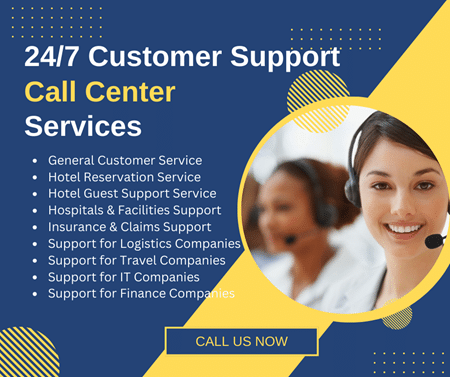Is your existing ITSM addressing your IT challenges efficiently? When was the last time you upgraded the system?
Your service desk is as important as any other management operation.
According to an ITSM Benchmarking Report, 50% of organizations believe their IT desk is “good” or “great.” A quarter of companies think they are “getting there,” and the other quarter says “there is room for improvement.”
Gone are the days when the use of IT service management tools was confined to the service desk. Nowadays, IT tools are engineered to improve organizational efficiency and streamline IT processes. With an overwhelming range of options to choose from, selecting the most suitable and effective ITSM has become a tedious process.
Going over a long list of features and processes is no longer an ideal criterion when selecting an ITSM tool. Your focus should be on how the tool can deliver the best business outcome and help you in growth. Below we have shared 10 important steps for selecting the best ITSM tool for your business. Keep reading.
1. List Your Requirement
What’s working for a small or a medium-sized company might not fit a multi-national organization’s requirements. So, the first step to selecting an ITSM tool is understanding your needs. How IT support and help desk looks like for your organization.
Start by identifying your daily technical requirements. What kind of problems do your business experience consistently? Which processes can be automated to achieve higher efficiency? Simply put, you should create a list of areas you need to streamline using the ITSM tool.
2. The Provider is as Important as the Tool Itself
When investing in an ITSM tool, take some time to research the managed IT service desk outsource. Your relationship with them won’t end after the sale. In fact, you are going to need their assistance till you use the ITSM.
Research their industry experience, the number of businesses they have served, what after-sale services they offer, etc.
3. Employee Experience
ITSM is supposed to make employees’ lives easier, but a recent survey shows that 58% of employees are unhappy with their work environment. They believe the work is affecting their well-being.
The efficiency of an ITSM tool is evaluated by how quickly your employees can resolve technical issues. It also depends on how the tool automates workflows and whether it affects the existing processes.
Most employees want a tool that offers an omnichannel experience. This should combine traditional telephones and emails with virtual agents and self-service portals. Your goal should be to look for an ITSM that boosts employee productivity. A system that helps IT service providers manage the help desk efficiently.
4. Be Clear About Must-Have and Good-to-Have Features
ITSM comes with a myriad of functions, some of which you will pay for but never use. You will also find vendors trying to sell an ITSM tool that doesn’t meet your list of requirements by claiming that those features aren’t important.
Focus on what features your business needs from an ITSM and what isn’t required. Some vendors are willing to customize the tool to your requirements by adding only the IT and non-IT functions requested by the user.
5. Services Beyond IT
The latest ITSM models also integrate ESM (Enterprise Service Management) features. ESM is a service-based approach that combines people, processes, and innovative technology to deliver the best business outcome. This includes management functions like HR, accounting, payroll, etc.
Take time to determine if that’s what your business needs. Look for an ITSM that offers both IT-related and non-IT functions. An ITSM tool that offers services beyond IT capabilities can increase employees’ productivity and improve business outcomes significantly.
6. Integration and Interoperability
An ITSM tool shouldn’t only integrate with the service desk systems but all tools across different management departments. You must see if the tool can remain integrated into various systems, despite the changes the systems might undergo later.
Check how easy it is to integrate the ITSM into your existing workflow and systems. Does the integration require technical expertise, or can your regular staff (the non-IT group) do it too? Check customer feedback for these tools to ensure the integration doesn’t become a nuisance.
7. Continual Improvement
Look for the following things in your ITSM tool to ensure it will meet the “continual improvement” requirement.
- Analytics and Dashboard that provides a detailed report about the company’s performance. These reports are based on the data collected from within the tool and other integrated systems.
- It offers the ability to shift from the status quo to the future state.
The best ITSM tool will support regular improvements — in your employees’ performance, IT service desk, ESM use, and business outcome.
8. Establish a Budget
Factor in the budget when shopping for IT service management systems. Don’t just include the purchase cost, but add the maintenance, services, and future upgrades too.
Check if the features you need in ITSM are included in the current cost plan.
There are systems that offer basic plans, such as a simple reporting tool that offers limited insights. For comprehensive reports, you need to upgrade your plan, which means extra charges.
9. Consider Time-to-Value
Time to value is the most crucial metric to determine the tool’s success. When determining the time to value, consider the tool implementation time, regular changes made in the system to ensure it meets your business needs, and major upgrades.
Understanding the time gap between the implementation of the ITSM tool and when it delivers value is important. The lesser the time-to-value, the better.
10. Look for an AI-enabled ITSM
The IT industry has already established most use cases of AI. Vendors have integrated AI functions into ITSM to enhance its capabilities. The AI-powered IT service management system will cover chatbots, comprehensive analysis, smart ticketing, and various services that streamline your IT operations.
Bottom Line
When selecting an ITSM tool, the key to making a great decision is understanding how the system will meet your organizational needs. Take employees’ suggestions and consider your business environment before finalizing the deal. Review customers’ feedback to know the effectiveness of the tool.







